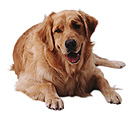Alaska Media Link
P.O. Box 102156, Anchorage, AK 99510
(907) 274-7896 -- fax (907) 274-5465
Rachel D’Oro
|
Alaska Media Link |
||||||||||
|
P.O. Box 102156, Anchorage, AK 99510 |
||||||||||
|
Rachel D’Oro |
||||||||||
|
(c) ANCHORAGE DAILY NEWS 01/29/99
Cheryl Paige has discovered a great use for junk mail. She feeds it to her worms. The slithery red critters also like shredded newspaper, leftover tacos, pizza, salad, birthday cake, ice cream and road-kill pumpkins. They gobble up chicken manure, coffee grounds, catalogs, cardboard, crushed glass and dry grass clippings. In return, Paige gets organic fertilizer year-round for her indoor plants, flower and vegetable gardens, and apple and choke cherry trees at her South Anchorage home. And as her customers have discovered, worms make quiet, odor-free trash compactors. Paige is the Alaska distributor of Can-O-Worms, a plastic composting system made in Sydney, Australia. Since she started three years ago, Paige has sold 1,000 of the black barrel-sized contraptions to individuals and schools in Anchorage, Mat-Su, the Kenai Peninsula and villages statewide. ''I'm hooked,'' Paige admitted Thursday as she picked up a handful of loamy material crawling with red wigglers, her preferred breed of composting worms, inside the garage. ''It changes your focus on everything. Now if I see a Kleenex, I want to put it in a worm bin. But you can't go around pulling Kleenex out of people's hands.'' By day, Paige is the pollution prevention coordinator for Elmendorf Air Force Base and the recycling program manager on the base. Employees there, under Paige's guidance, dump much of their throwaways into 12 larger composters called Worm Wigwams, which the base bought from an Oregon company. After work, Paige tends to the seven working Can-O-Worms farms she keeps in her garage and kitchen to make compost and breed worms, which can grow to 5 inches long and live up to two years. A Can-O-Worms kit sells for $99 and includes half a pound of red wigglers, enough for a two-person household, Paige said. A fast-start kit costs $115 and comes with a pound of the worms, which eat two cups of trash a day. Recently, Paige bought her own Worm Wigwam, which she keeps outside under a special heating pad. The Wigwams, which include 25 pounds of worms, go for $835. The yield of compost -- or worm droppings -- is about half of what worms eat. But because red wigglers double in population every three months, people can expect to get more and more compost, Paige said. The worm kits have four layers: a base for catching nutrient-rich ''liquid fertilizer,'' and three mesh trays. The worms start on the lower tray and eat their way up, creating a supply of compost every six weeks. Paige always has at least 75 pounds of worms on hand, about half devoted to breeding. She sells her home-grown wigglers for $25 a pound. ''My customers are people who are really committed to recycling,'' Paige said. ''They're people who want to teach children about the natural world. And they're gardeners.'' Nancy Beck, a master gardener, bought a worm farm from Paige two years ago to supplement the worm compost she makes in wooden boxes. Beck hides the boxes in her laundry room but keeps her Can-O-Worms in the kitchen of her Anchorage home. ''It's a neat system and a presentable way to recycle,'' she said. ''Not that it's everyone's piece of kitchen furniture.'' Paige started worm composting five years ago after becoming dissatisfied with conventional outdoor hot composting, a method she thinks is harder to do well in Alaska's extreme conditions. Her husband, Robert, checked around with local gardening suppliers and learned about worm composter Sue Adams, who lived in Anchorage at the time and was known as The Worm Lady. Adams, who has since left the state, sold Paige her first pound of worms, which she initially kept in cardboard boxes. Big mistake, like fashioning a dog bowl out of steak. Paige switched to plastic boxes, but with no air passing through, the results were smelly. Three years ago, she read about Can-O-Worms in a magazine and quickly ordered 64 kits, which she unloaded that summer at Saturday Market. Her husband and two young daughters quickly embraced her recycling program. Paige said that after lunch once at a friend's house, she wanted her 8-year-old daughter to carry her leftovers to the kitchen. ''Now, Annalise, where do you take your plate?'' Paige asked. ''To the worm bin,'' the child piped out. |
||||
 |
||||
 |
||||||
|
E-mail me |
||||||